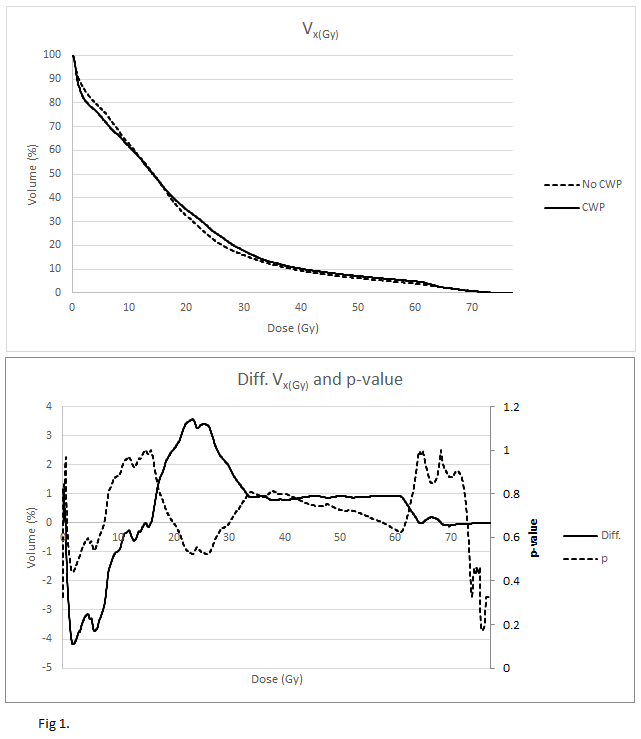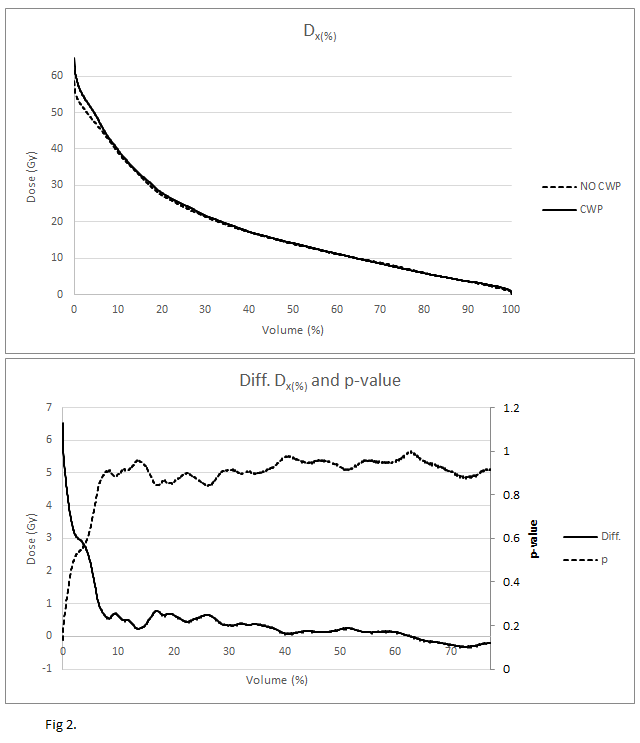Chest wall pain in lung SBRT patients: dose-volume correlations
Daniel Lambisto Castro,
Spain
PO-2050
Abstract
Chest wall pain in lung SBRT patients: dose-volume correlations
Authors: Carles Muñoz-Montplet1, Rafael Fuentes-Raspall2, Diego Jurado-Bruggeman1, Beatriz Gómez-Horsfield3, Oriol Font-Planas4, Daniel Lambisto-Castro1, Sebastià Agramunt-Chaler1, Albert Onsès-Segarra1, Ingrid Romera-Martínez1, Eduard Massana-Melchor1, Arantxa Eraso-Urién2
1Institut Català d'Oncologia, Medical Physics and Radiation Protection, Girona, Spain; 2Institut Català d'Oncologia, Radiation Oncology, Girona, Spain; 3Institut Català d'Oncologia, Haematology, Girona, Spain; 4Universitat Autònoma de Barcelona, Physics, Bellaterra, Spain
Show Affiliations
Hide Affiliations
Purpose or Objective
The risk for chest wall pain (CWP) in lung SBRT is positively related to several ribs’ dose-volume parameters: D0.5cc, D1cc, D2cc, D5cc and V30 (Ma et al, 2019). This study aimed to determine the relationship between any DVH parameter of the ribs and CWP incidence in a single-institution lung SBRT series.
Material and Methods
We reviewed medical records to identify CWP in a series of 54 lung patients treated with a prescription dose of 60 Gy in 5 or 8 fractions, using SBRT at our institution between 2012 and 2017. We calculated the ribs’ mean Vx and Dx DVHs and performed heteroscedastic t-tests at each point (bin s of 0.06 Gy and 0.05 % respectively) to evaluate the significance (p<0.01) of the differences between patients with and without CWP. We performed all calculations with the Acuros XB algorithm implemented in the Eclipse treatment planning system (Varian Medical Systems; Palo Alto, CA, USA), reporting dose-to-medium.
Results
We observed CWP in 15 patients. Fig.1 shows that patients with CWP had slightly lower Vx values in the low-dose region, while this trend reversed in the intermediate and high-dose regions. Fig. 2 shows that patients with CWP had higher Dx values, especially for high dose volumes. Near-maximum rib doses showed the highest correlation, as expected. Although our findings are in accordance with the literature, none of these differences was statistically significant, probably due to a lack of statistical power.


Conclusion
We observed CWP in 28% of our lung SBRT series. We did not find any statistical difference in ribs’ Vx and Dx parameters between the non-CWP and the CWP groups. Near-maximum ribs doses showed the highest correlation with CWP appearance. Larger datasets might help predict radiation-induced CWP better.